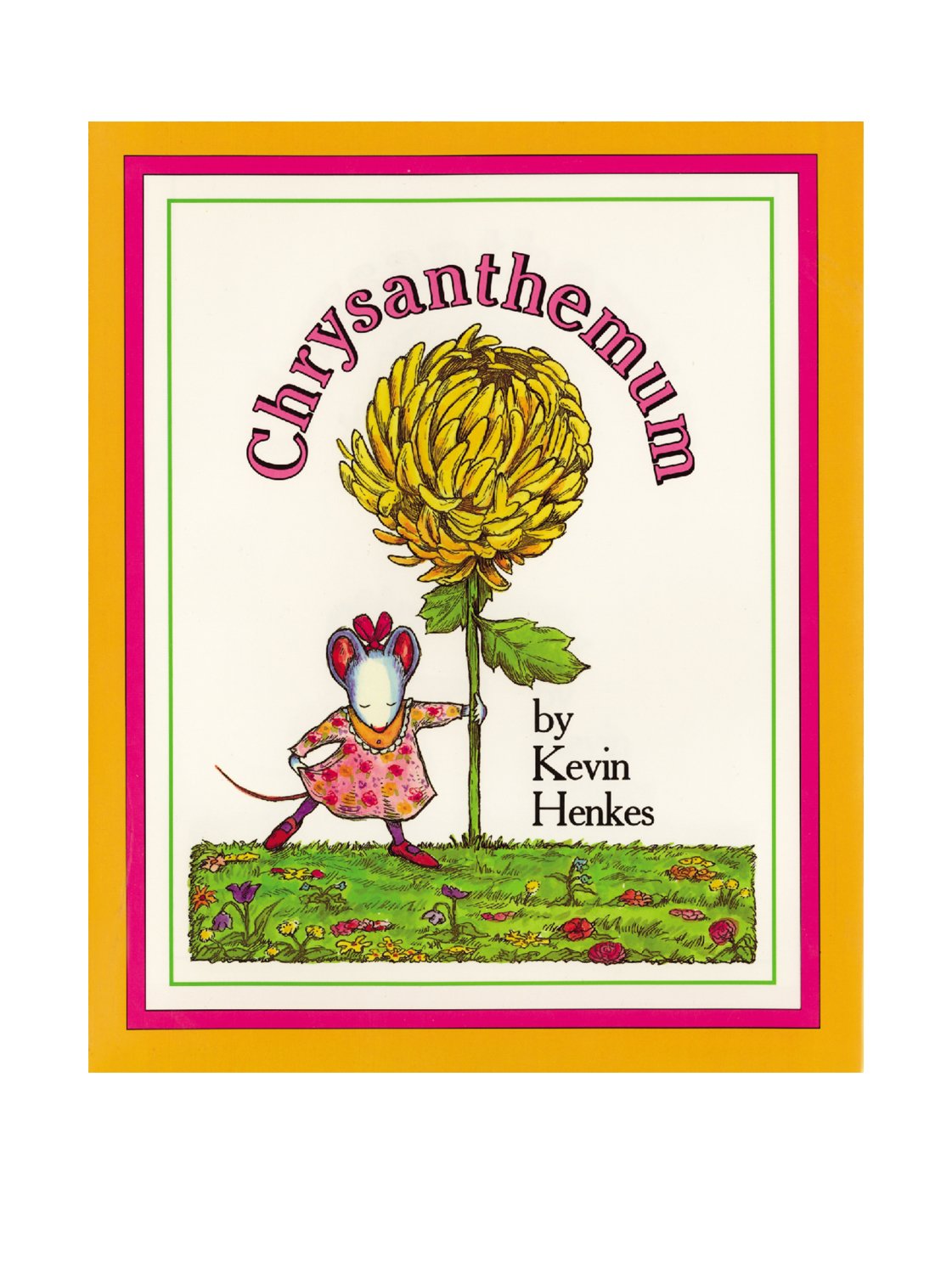Book Summary
In Kevin Henkes’ beloved 1991 picture book Chrysanthemum, we meet a young mouse who adores her floral name—until her first day of school. Classmates Victoria, Rita, and Jo tease her mercilessly (“You’re named after a flower!” “Let’s smell her!”), causing Chrysanthemum to dread school despite her parents’ nightly reassurances that her name is “absolutely perfect.” The turning point comes when the students meet their glamorous music teacher, Mrs. Delphinium Twinkle, who reveals she too has a flower name and plans to name her baby Chrysanthemum. Suddenly, the teasing stops, and Chrysanthemum blooms with renewed confidence.
Henkes masterfully balances humor and heartache in this 32-page story. While some critics argue the resolution hinges too heavily on adult validation, most agree the book’s emotional authenticity resonates deeply with children. The whimsical watercolor illustrations—featuring expressive mice in human scenarios—add layers of visual storytelling, like Chrysanthemum’s father reading psychology books titled “The Inner Mouse” when she’s distressed.
Key Themes
Chrysanthemum explores bullying and peer pressure through gentle but impactful storytelling. The classroom dynamics mirror real-life scenarios where children target differences (like unusual names) to assert social dominance. Henkes shows how repeated teasing causes Chrysanthemum to physically “wilt”—a powerful metaphor for eroded self-esteem. Notably, the first teacher Mrs. Chud does little to intervene, highlighting how passive adults can unintentionally enable bullying.
Another central theme is the power of names in identity formation. Chrysanthemum’s journey from pride to shame and back again demonstrates how external validation shapes self-perception in childhood. The book also subtly critiques societal conformity—while the classmates eventually embrace flower names, their change stems from peer approval rather than genuine understanding.
What Makes It Unique
Unlike many children’s books about bullying, Chrysanthemum doesn’t offer simplistic solutions. The resolution hinges on a relatable childhood phenomenon: the influence of a “cool” adult (Mrs. Twinkle). This reflects Henkes’ understanding of child psychology—kids often value peer and mentor approval more than parental reassurance. The book’s epistolary elements (name-counting scenes, written name tags) also make it ideal for early literacy lessons.
Henkes’ anthropomorphic mice add whimsy while allowing emotional distance—children can project their experiences onto Chrysanthemum without feeling directly confronted. The illustrations’ sequential panels (showing Chrysanthemum growing up) and visual jokes (like dad’s absurdly large psychology books) create re-read value. Some parents note the vocabulary (“winsome,” “scarcely”) challenges young readers, but this intentional word choice sparks meaningful discussions.
Reader Reactions
With over 56% 5-star ratings on Goodreads, readers praise how Chrysanthemum “validates the pain of teasing while offering hope.” Teachers especially value its classroom applications—many use it for name-themed activities at school year’s start. Parents of children with uncommon names report the book helps their kids “feel seen,” though some wish Chrysanthemum’s confidence came from within rather than external validation.
Critics debate the ending’s realism—Victoria’s sudden change of heart may seem abrupt—but most agree it effectively shows how authority figures can shift social dynamics. The American Library Association named it a Notable Children’s Book, and it remains a top pick for anti-bullying curricula decades after publication.
About the Author
Kevin Henkes is a Caldecott and Newbery Honor-winning author-illustrator known for his mouse-centric picture books. Since publishing his first book at 21, he’s created over 50 works including Lilly’s Purple Plastic Purse and Kitten’s First Full Moon. His stories often explore childhood anxieties with warmth and humor, drawing from his Wisconsin childhood and observations as a parent.
Henkes has said he chose mice as characters to “incorporate humor more easily,” and his distinctive watercolor style makes emotions instantly recognizable. Chrysanthemum reflects his signature themes: navigating social challenges, the teacher-student bond, and family support. In 2020, he received the Children’s Literature Legacy Award for his contributions to the genre.
Memorable Quotes
“Chrysanthemum thought her name was absolutely perfect. And then she started school.”
“She blushed. She beamed. She bloomed.”
“I’m named after a flower too! My name is Delphinium. Delphinium Twinkle.”
